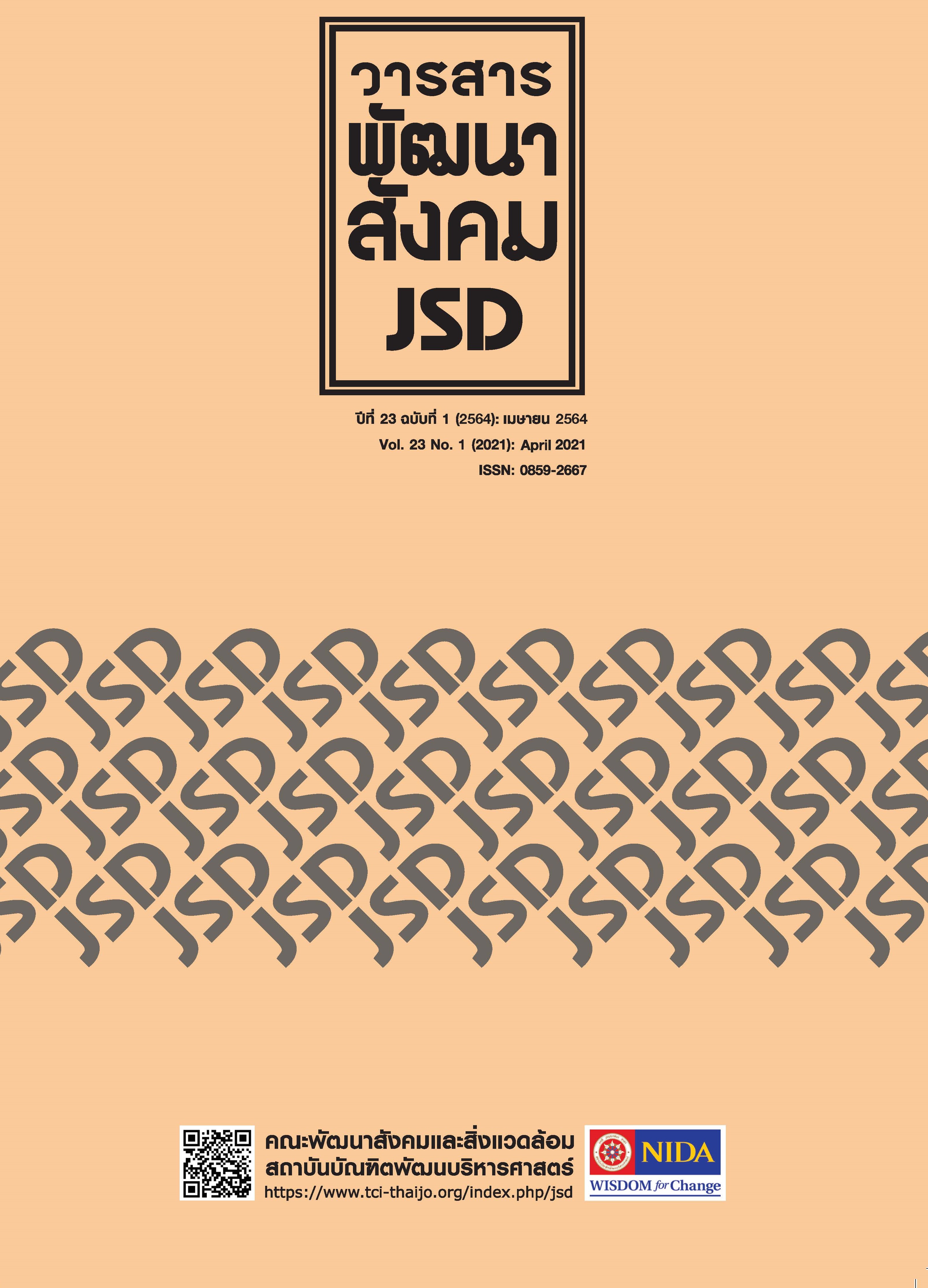Politics of Participation Process for the Driving of Baan Man Kong: A Case Study of Sangsan Nakhon Rangsit Community in Pathumthani Province
Main Article Content
Abstract
Article Details

This work is licensed under a Creative Commons Attribution-NonCommercial-NoDerivatives 4.0 International License.
References
Almond A. G. & Powell G.B. (1966). Comparative politics: a developmental approach. Boston Little, Brown and Company.
Boonyapanya, S. (2005). Baan Munkong projects House more than house (In Thai). Journal of Social sciences and Humanities. 45(1). 1-17.
Cohen, J.M. & Uphoff, N.T. (1980). Participations place in rural development: Seeking clarity. Prentice -Hall, Inc.
Community Organizations Development Institute. (2005). Result of the project to solve the problem of insecurity in the housing of low-income people According to the Baan Munkhong Project 2003-2004 (In Thai). Bangkok: Community Organizations Development Institute Ministry of Social Development and Human Security.
French, J & Raven, B. (1959). The bases of social power. University of Michigan, Institute for Social Research.
Gaetano, M. (1939). The Ruling class, trans Hannah D, Kahn. New York: McGraw-Hill.
Health Information System Development Office. (2014). To reform from foundations. Bangkok. Office of Health Information System Development.
Jumbala, P. (2003). Political system: Introduction (In Thai). Bangkok: Publisher of Chulalongkorn University.
Kanchanasuwon, w. (2010). Strong Community Management Process: Model, Factors and Indicators (In Thai). Ubon Ratchathani University.
Leelaveerakoola, P. (2016). Guidelines for promoting cooperative of Baan Munkong (In Thai). Papers. Cooperative Promotion Department.
Rangsit Multicipalty. (2013). Hundreds of hands creating cities. Pathum Thani (In Thai). Rangsit Multicipalty.
Samukkhethum, S. (2011). Establishing the power of the powerless (In Thai). Bangkok. CSB Printings.
Strauss, W. & Howe, N. (2007). Generation Theory. Harvard business review. 41-52.
Tiangtham, W. (2015). Community Potential Development: Concepts and Applications
(In Thai). Bangkok: Daenex Corporation Printings.


